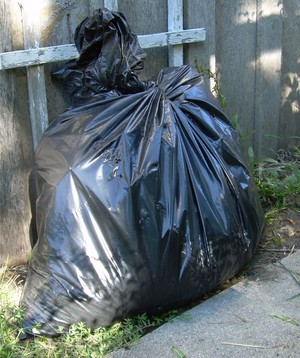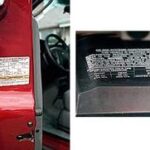It never fails. Every fall, I watch thousands of people place their leaf-stuffed plastic garbage bags out at the curb, where they’ll get hauled to the city dump. And, with every spring that follows, these same people generally spend a small fortune at the local Gardening Center for organic compost.
As most gardeners have discovered already, composted material is one of the most perfect soil additives around. This earthy, black material is made of decaying plant matter and is rich in nitrogen, phosphorous, and potassium. By composting the leaves from your very own yard, this marvelous organic material is kept out of the landfill, while saving yourself money in the spring.
Composting the Lazy Way
Plastic bag composting is the easiest, most laziest way of composting leaves and lawn clippings there is. All that’s required is a sturdy 30 or 40 gallon plastic yard bag. For myself, I prefer the 3 ml Hefty Contractor Bags which are tear proof and can be reused several times. Other items that may be helpful are a yard knife and some twine.
The basic idea behind plastic bag composting is to fill up the bag with leaves and grass, tumble it a couple of times, and then let the plastic bag do the rest of the work. It doesn’t get much easier than that!
There is a bit of a catch; for the plastic bag compost system to work, there must be a mixture of both leaves and grass in the bag. If you have gathered up the leaves with a leaf blower, just be sure to add a mower bag of grass clippings to your plastic bag composter. Without “green” components in the bag, those carbon rich leaves won’t have any nitrogen to get the composting process started. Better yet, just keep the leaf blower in the garden shed, and mow up the leaves with the grass instead. This combination of chopped leaves and grass can be dumped directly into the plastic bag, without having to add any other material. Once those garden bags have been filled to the brim with leaves and grass, stomp ’em down and pour a gallon of water inside. Puncture the sides with a steak knife, tie up with twine, and then drag the bags to an out of the way location in your yard.
During the next couple of months, flip the bags over and upside down at least two or three times. This helps to mix things up a bit, and speed up the composting process. Once the weather gets downright frosty and the temperatures drop below freezing, the bags can be ignored until the spring thaw.
When you finally break into those bags the following spring, you’ll discover that each bag should contain around a gallon or more of dark, crumbly compost . If not all the leaves have broken down, don’t worry! Just toss in a shovelful of yard dirt, a little water, and give the bag one more flip. Within 2 weeks, the material will have finished composting and can be troweled into the garden beds.




